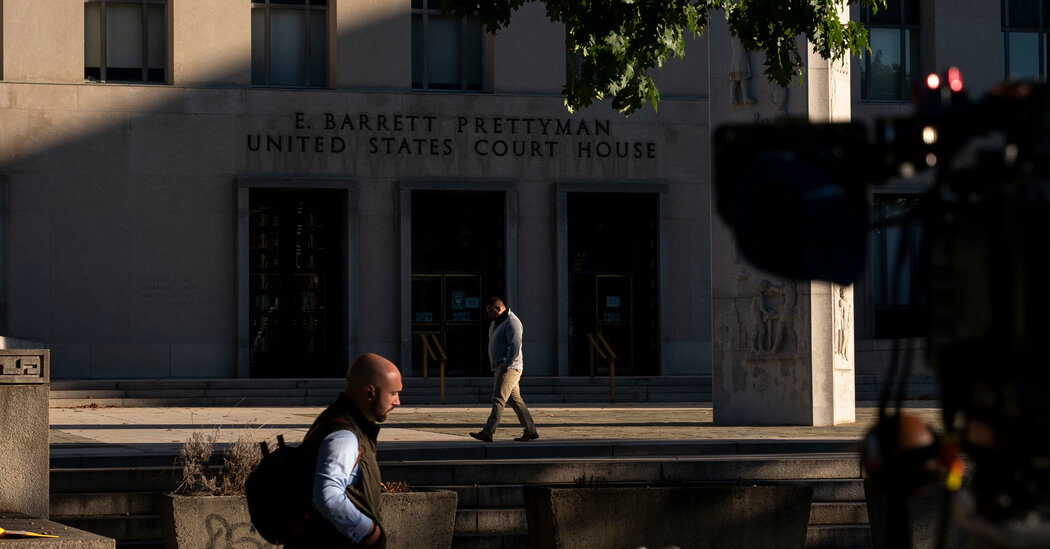Engineers Are Raising Questions About Piers Supporting Baltimore Bridge
The Key Bridge in Baltimore suffered a near-total collapse after a large container ship appeared to strike a critical component, known as a pylon or pier, and much of the structure above it plummeted into the water below, according to several engineers who have reviewed footage of the incident.
Without the pier, they said, it was impossible for other components of the bridge to assume the load and keep the bridge standing.
The piers on a bridge act as a kind of leg and are what is known as “nonredundant” parts of a bridge’s structure. If a pier is somehow taken out, there is nothing to compensate for the missing structural support, and a collapse of the bridge is all but inevitable, most of the analysts said.
Yet the collapse in Baltimore on Tuesday might have been avoided, some of the engineers said, if the piers were adequately equipped with blocking devices with a self-explanatory name: fenders. In bridge engineering, fenders can be anything from simple pyramids of rocks piled around the pylons to major concrete rings padded with slats of wood, designed to shield the bridge’s supports from damage by water or collisions.
It was not clear whether any such protection built around the bridge’s piers was sufficient to guard against even a glancing hit from a 95,000-gross-ton container vessel.
The Maryland Transportation Authority did not immediately respond to a request for comment on the design of the piers, or whether any fenders were installed around them.
At a news conference on Tuesday afternoon, the chair of the National Transportation Safety Board, Jennifer Homendy, said protective structures would be a part of the investigation into the bridge’s collapse. “There’s some questions about the structure of the bridge — protective structure around the bridge or around the piers to make sure there isn’t a collapse,” she said, responding to a reporter’s question.
“We are aware of what a structure should have. Part of our investigation will be how was this bridge constructed? It will look at the structure itself. Should there be any sort of safety improvements? All of that will be part of our investigation.”
A widely circulated video of the Key Bridge failure drew attention to the disastrous collapse of the upper bridge structure. But engineers who reviewed the footage said that did not appear to be the culprit in the disaster. Instead, they said, the superstructure failure was most likely a secondary effect of the pier crumbling beneath it after the collision.
Engineers who reviewed images of the bridge both before and after the collapse said no significant fender structures were visible. Only fairly small structures were visible in photos taken at the foot of the pier, and they did not appear to be substantial enough to be able to stop a large ship, some of them said. They said the structures may have served another purpose entirely — like preventing water from scouring and undermining the pier’s foundation.
In some bridges, engineers may elect, instead of fendering, “the alternative of making the pier exceptionally strong,” said Shankar Nair, a structural engineer with over half a century of experience who is a member of the National Academy of Engineering. But the visual evidence so far, he and others said, suggested that the pier was simply not strong enough to survive the collision.
The structure’s apparent vulnerability left some engineers dumbfounded.
“This is a huge shock,” Dr. Nair said. “A bridge of that size and importance should not collapse when hit by an errant vessel.”
The importance of sturdy fenders on bridge piers was backed up by a similar accident that occurred in 2013 when a 752-foot-long tanker collided with a support of the San Francisco‒Oakland Bay Bridge. According to a National Transportation Safety Board report on the incident, the support stood — although $1.4 million in damage was done to the fendering system, which cushioned the impact.
In other cases when collisions lead to full or partial collapses, shortcomings in the fendering system are usually involved, said Matthys Levy, a longtime structural engineer and co-author of “Why Buildings Fall Down.”
“It’s usually an issue of fendering,” Mr. Levy said. “The fendering is not strong enough.”
According to a description of the Key Bridge by an American Society of Civil Engineers manual, the 8,636-foot-long structure in Baltimore was opened to traffic in 1977. The steel span above it, a design known as a truss, can be vulnerable to failure itself — damage to individual elements of the truss can theoretically cascade into a wider collapse. But that did not appear to be the case in Baltimore, engineers who reviewed the footage said: The truss, they said, was simply unable to remain intact when the pier was taken out beneath it.
Tuesday’s collapse raises the question “of how vulnerable are the piers and what is done or should have been done to protect them in the event of something like this,” said Donald O. Dusenberry, a consulting engineer who has investigated many bridge failures.
Mr. Dusenberry, in pointing to the issue of fender protection, said that it was impossible to make a full determination of what was installed without reviewing structural drawings of the bridge.
But images taken before the disaster, he said, suggested that small barriers that could be seen rising around the bridge’s piers, roughly at water level, would be unlikely to be able to stop a large ship. Effective fenders, he said, had to be far enough from the pier to keep the bow of a large ship from striking the pier, and large enough to absorb the energy of a collision. Assuming nothing had changed since the prior pictures were taken, he said, the visible structures did not seem up to that task.
“Maybe it would stop a ferry or something like that,” he said. “Not a massive, oceangoing cargo ship.”


